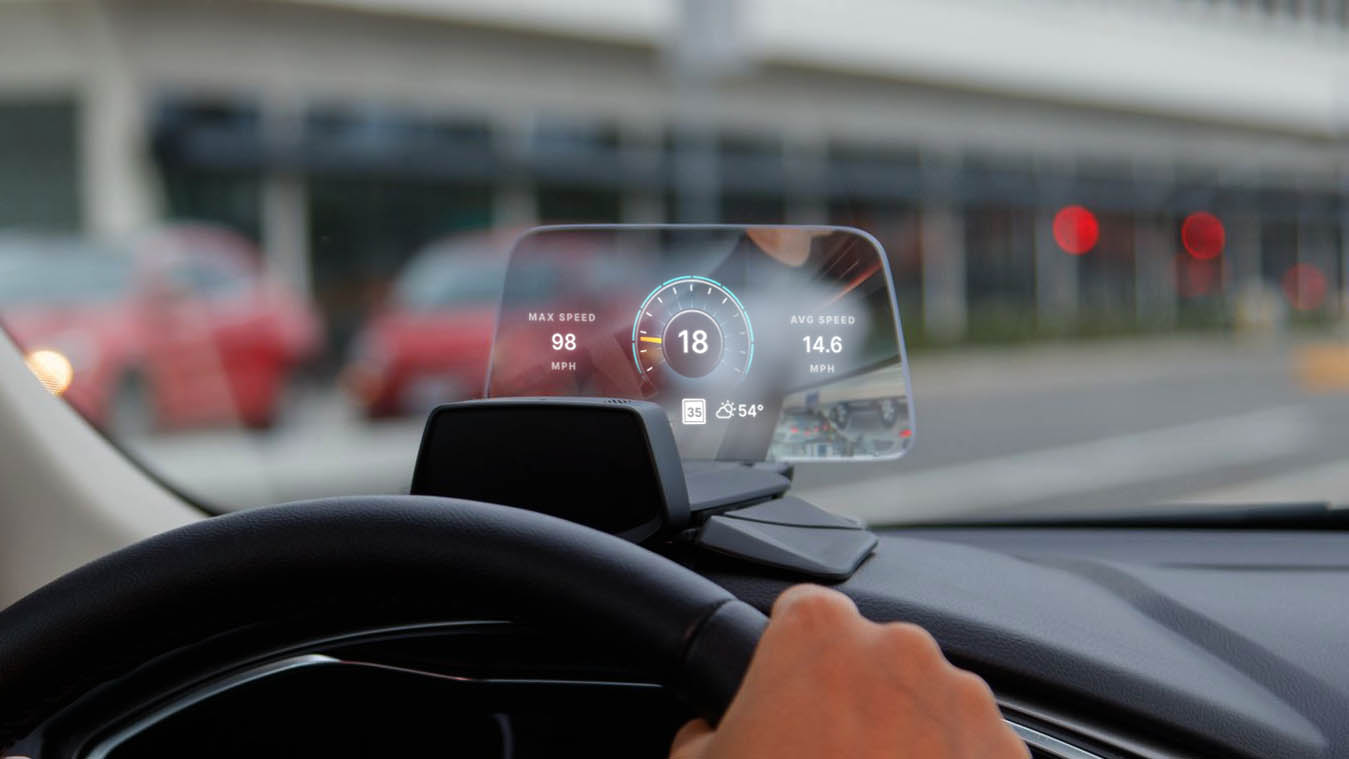What is Heads Up Display (HUD) in Cars and What are Its Advantages?

Have you ever imagined seamlessly accessing vital car information while keeping your eyes glued to the road?
Well, this is possible with the Heads-Up Display technology. The Heads-Up display in cars is becoming increasingly common owing to its many benefits.
In this piece, we’ll explore Heads-Up displays in cars, including their features, advantages and disadvantages, among other crucial details.

Table of Contents

What is a Heads Up Display?
A Heads Up display (HUD) is a see-through screen on a car's dashboard that displays vehicle data without distracting the driver. This cutting-edge vehicle technology is named after its driver seat.
This lets the driver sit upright and quickly access all the vital information. Display the car's speed and navigation on the head-up display. Initially designed for military aeroplanes, they are now used in cars and other transports.
What are the Features of Heads-Up Display?
While some systems will allow you to choose what information you want to display, here are some common features of HUD display.
- Speed: One of the crucial functions of the Heads-Up Display is to show vehicle speed in real time. This allows the driver to monitor the speed correctly without taking their eyes off the road.
- Navigation: Some HUD displays show turn-by-turn navigation instructions, thus reducing the need for the driver to look at a different screen.
- Safety Alerts: It helps alert drivers against potential hazards like lane departure warnings, and collision warnings.
- Fuel Levels: The HUD displays the fuel level, drivers are aware of their fuel status without the need to check the dashboard everytime.
- Media Information: Some HUDs also display entertainment information like incoming class, such as incoming class and music tracks, thus enabling drivers to stay connected without compromising safety.
Different Types of Heads Up Displays in Cars
Here are the common types of HUDs available for cars:
1. Windshield Projected HUD
It is a projection-based display that uses LED lights to project crucial information like fuel consumption, vehicle speed, etc., onto the windshield. This is the most prevalent type of HUD technology in cars, ensuring the display is bright and clear. However, it is important to note that windshield projected HUD is costly and is available in high-end cars only.
2. Combiner Projected HUD
This type of HUD system uses a reflection based technology. It operates by utilising specially designed transparent glass. This screen reflects useful information right in front of the driver’s sight. This type of technology is quite cheap as compared to projection based ones and is visible in mid range affordable vehicles.
3. Smartphone-Based HUD
This aftermarket device projects the screen of the linked smartphone onto the car's windscreen, allowing the driver to see navigation, speed, and other data. However, the data shown by this gadget is only sometimes reliable, as it isn't connected to the vehicle's computer system. Still, it is a budget-friendly choice for anyone looking for this function in their car.
What are the Advantages of Heads Up Display in Cars?
Heads Up display brings several safety benefits to the driver:
- Enhanced Safety: The primary benefit of a Head-Up Display (HUD) is its ability to display critical information immediately in the driver's field of vision. It helps drivers focus on the road by avoiding distractions like shifting their sight to the dashboard or other devices.
- Convenience: The HUD provides quick and easy access to information such as speed and fuel level, making driving more convenient.
- Customisation: Some HUDs allow drivers to tailor data and choose how it is shown based on their preferences.
- Better Navigation: The HUD can give turn-by-turn directions, letting drivers focus on the road. Instead of using a smartphone or navigation device, this function reduces the risk of getting lost or missing a turn.
- A Touch of Modernity: Another notable benefit of HUDs is that they add a touch of modernity to your vehicle. The availability of HUDs in cars is considered a premium feature, and hence, the car's resale value also increases.
What are the Disadvantages of Heads Up Display in Cars?
While HUD offers numerous benefits, here is a list of drawbacks you should know about.
- Expensive: The HUD often has a higher price tag as it is a relatively new and advanced feature. As a result, it may not be available for budget car owners.
- Problems with Visibility: Head-up displays (HUDs) project information onto a see-through screen or windscreen; interference from glare, intense sunlight, or polarised eyewear can make this display less legible. Because of this, the HUD's performance under specific driving conditions might be affected.
- Distractions: While HUDs are intended to limit distractions, they can still be annoying if misused. Drivers may still be tempted to focus on the HUD display rather than the road, posing possible safety risks.
What Is the Difference Between Heads-Up Display (HUD) and Head Mounted Display (HMD)?
HUD and HMD (Head Mounted Display) are two varied technologies. Here are some key differences between them.
|
Features |
Heads-Up Display (HUD) |
Head Mounted Display (HMD) |
|
Display Location |
Display information on the windscreen or transparent screen in the user’s view. |
The user wears a device on the head, such as goggles that display information right before of their eyes. |
|
Mobility |
Integrated into the vehicle’s dashboard. |
A portable device that the user can wear. |
|
Use Case |
Used in cars for drivers to access information conveniently while driving. |
Often used in AR or VR apps. |
List of Cars with Heads up Displays
| Maruti Suzuki Baleno |
| Toyota Glanza |
| Maruti Suzuki Grand Vitara |
| Kia Seltos |
| Toyota Urban Cruiser |
| Toyota Camry |
| BMWX1 |
| BMW 3 series |
| Volvo XC40 |
| LexusNX300H |
| Audi A6 |
| Kia EV 6 |
| Jaguar F-Pace |
| Range Rover Vogue |
| Mercedes Benz S-Class |
| Mini Cooper Countryman |
















